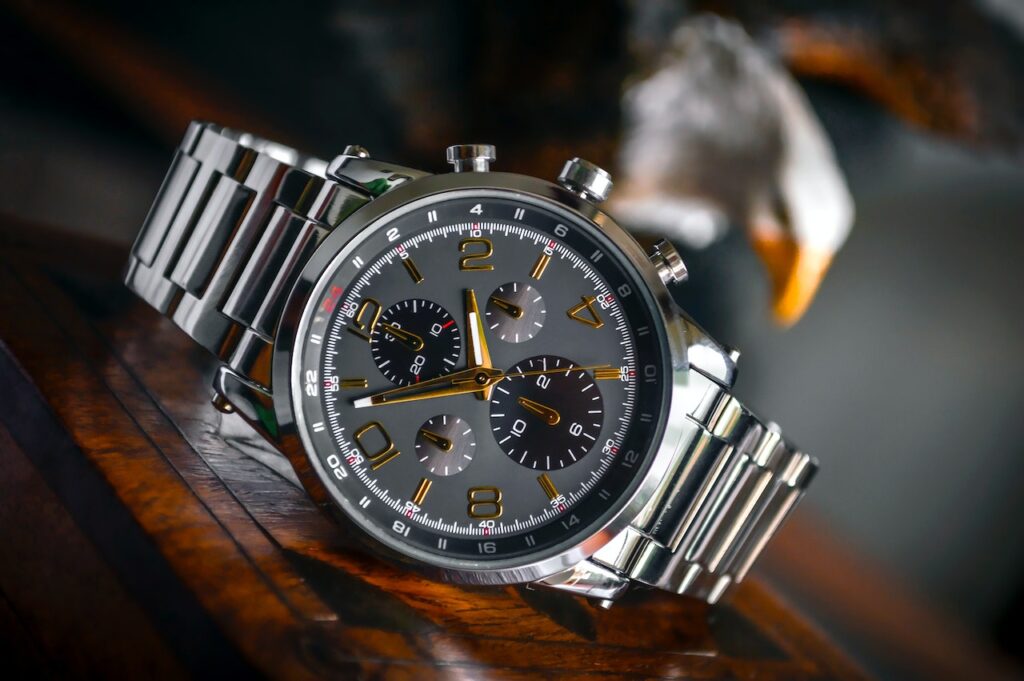The history of wrist watches goes back several centuries and dates back to the 16th century when the first wrist watches appeared in the late 19th century and also became popular in the early 20th century. They were much more convenient than pocket watches, which had to be taken out of a pocket or bag to tell the time.
The first wristwatches were made by hand and had a simple mechanism. They were fitted with simple details such as the dial, hands, spring tension mechanism and case. Watches were reliable and accurate, but they were too expensive to produce and also they were only available to wealthy people.
Jewelers built clock mechanisms into women’s gold bracelets, adorned with precious stones. Such goldsmithery served, first of all, as a jewelry and an indicator of the high status of its owner. We expect the same from modern wrist watches, as in the age of smartphones they have moved from the category of utilitarian things to the category of status accessories.
Detailed information about the history of clock development can be found in English sources, which for your convenience can be translated into any language at a professional translation agency https://translation.center/de-uebersetzungsbuero-hamburg.
Let’s consider what types of wrist watches exist and what is the difference between them, moreover, what are their features and advantages.
Mechanical watches
This is the oldest, classic type of wrist watch, which in the budget segment has been almost replaced by modern electronic models, but still is in high demand among connoisseurs of luxury watch brands. The design includes a case, a dial with arrows, and a lot of gears on bearings made of precious stones. The mechanism is driven by the energy of the spring, which is twisted during production. In about 24 hours, the potential of the compressed spring dries up and the mechanism must be started again. Luxury models are made in the case of precious metals with sapphire glass. They have a stylish, classic design and high precision. But on average, this type of wrist watch is significantly inferior to quartz and electronic accessories in accuracy.
The most accurate copies of luxury mechanical models have an error of no more than 10 seconds per day, after passing the certification, all in all, they are assigned the status of chronometer. The drawbacks of mechanical watches can be attributed to the necessity to wind up the mechanism every day. Self-winding watches are deprived of this shortcoming. The design includes a disc with an offset centre of gravity, which rotates spontaneously when the arm moves, thereby twisting the spring. You don’t have to wind up them in case of constant wear. More often, self-winding make male models, because of the presence of the disk they have increased thickness.
Digital watches
This type of wrist watch appeared in the middle of the last century and immediately became popular. And this is not surprising, because digital models are much more accurate than mechanical and also they may have additional functions such as alarm clock, stopwatch, calculator, etc., you don’t have a necessity to be wound up. Their design is based on a chip with a quartz generator, which is powered by a miniature battery. Time readings are showed on the display. They are unisex models in most cases, but can be male or female. Digital models are not in the range of luxury accessories, but they have excellent functionality and are indispensable for athletes, travelers and people of some professions. However, in recent years, digital models have become a serious competitor. It are smart watches with much broader functionality.
Quartz watches
Electromechanical watches are called quartz watches. Their difference from the electronic is that they have a dial with arrows instead of a display. They combine all the advantages of an electronic “filling” such as high accuracy, no necessity for a wind up with a classic mechanical design. Quartz watches are more exact than mechanical watches as they use electronics to manage time. Quartz watches are also less expensive to manufacture and maintain than mechanical watches. Nevertheless, some people prefer mechanical watches because of their uniqueness and characteristic timing mechanisms. Quartz models along with mechanical produce luxury watch brands. There are a lot of accessories of this type and among budget models. The great variety of design of male and female wrist quartz models is able to satisfy any tastes.
An interesting solution is a quartz watch with a solar panel. Their dial serves simultaneously as a miniature solar panel. By capturing solar radiation during daylight hours, the panel charges the battery that powers the clock mechanism case, when device stays in the dark in the design of the device there is a battery. A more detailed translation of the technical characteristics of such types of watches in any language can be ordered in a specialized translation agency https://translation.center/ukr-de.
